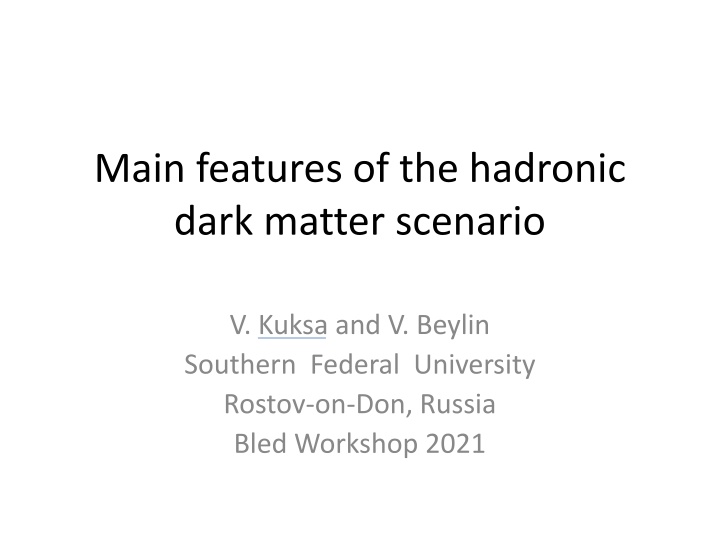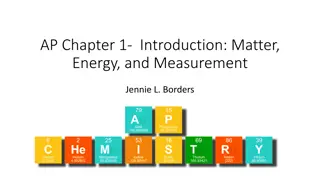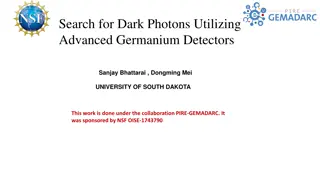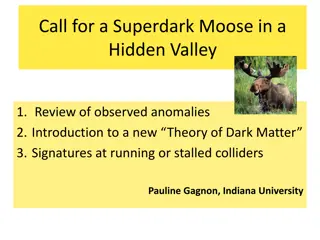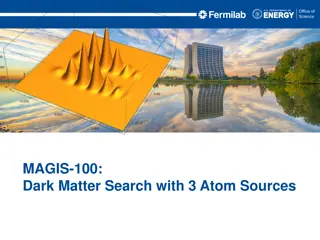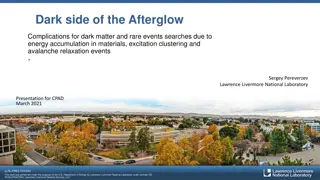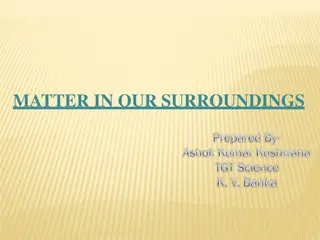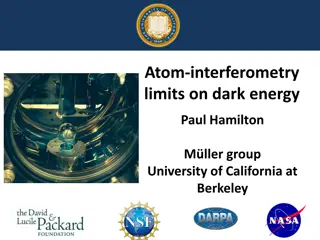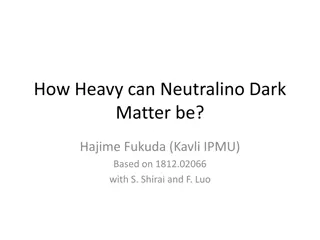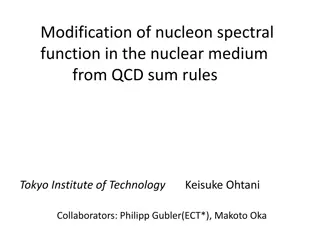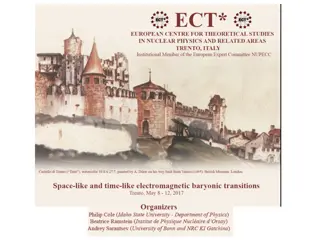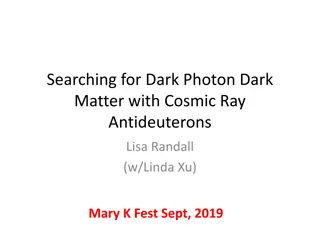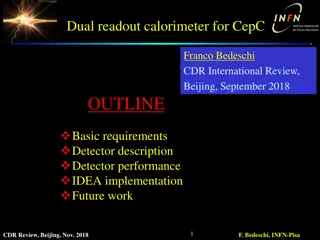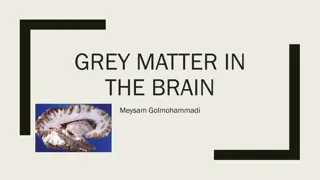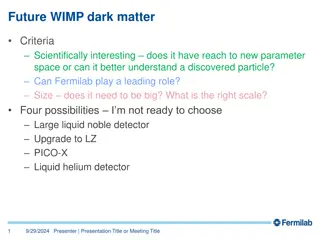Main features of the hadronic dark matter scenario
In this scenario presented by V. Kuksa and V. Beylin from Southern Federal University, various aspects of new quarks, fundamental interactions, heavy quark evolution, and quantum numbers of heavy hadrons are discussed. The presentation delves into the definition of mass of new quarks, effective interactions of new mesons, and more, shedding light on the potential nature of dark matter.
Download Presentation

Please find below an Image/Link to download the presentation.
The content on the website is provided AS IS for your information and personal use only. It may not be sold, licensed, or shared on other websites without obtaining consent from the author.If you encounter any issues during the download, it is possible that the publisher has removed the file from their server.
You are allowed to download the files provided on this website for personal or commercial use, subject to the condition that they are used lawfully. All files are the property of their respective owners.
The content on the website is provided AS IS for your information and personal use only. It may not be sold, licensed, or shared on other websites without obtaining consent from the author.
E N D
Presentation Transcript
Main features of the hadronic dark matter scenario V. Kuksa and V. Beylin Southern Federal University Rostov-on-Don, Russia Bled Workshop 2021
Contents New quarks from SM extensions and hadronic DM. Fundamental interactions of new singlet quarks and EW restrictions on new quarks. Definition of mass of new quarks from DM relic density. Evolution of heavy quark sector. Quark structure and quantum numbers of new heavy hadrons. Stable particles. Fine splitting and hyperfine structure of excited states and luminosity of hidden matter. Effective interaction of new mesons with nucleons and leptons. Conclusions.
Fundamental interactions and restrictions on mass of new quarks
Determination of mass of new quarks from relic abundence of DM
Quantum numbers, isotopic and quark structure of new hadrons
Fine and hyperfine structure of excited states of heavy hadrons
Low-energy interaction of nucleon and dark matter particles
One-meson exchange approach to NM-interaction
Cross-section of low-energy NM interactions
Interaction of hadronic DM with standard leptons
Cross-sections of DM-Lepton scattering
Conclusions HDM is not excluded by EW and CC restrictions. Analysis of HDM scenario with account of chromo-Coulomb interaction. Large mass of DM hadrons (10 TeV and upper). Signals of charge M-decay: metastable charge particle and low-energy leptons. Hyperfine mass-splitting in M-M*: signals - low- energy photons (keV) and luminosity of DM. Description of DM interaction with usual matter.
